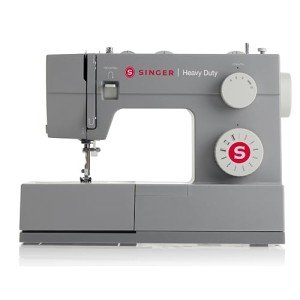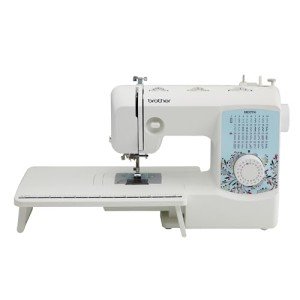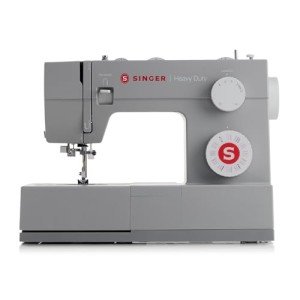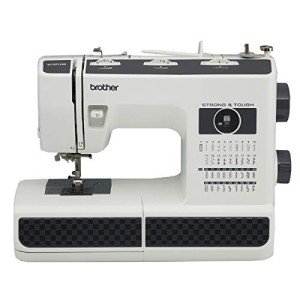Buttonholes may seem like a small detail, but they play a crucial role in the overall look and functionality of garments. Whether you're making a shirt, jacket, or dress, learning how to sew buttonholes perfectly is an essential skill. In this guide, we’ll walk you through the different types of buttonholes, step-by-step instructions for creating them, and tips to ensure a professional finish every time.
Why Perfect Buttonholes Matter
Buttonholes are not just functional; they’re also a design element that can either elevate or diminish the overall look of your garment. A neatly sewn buttonhole complements your buttons, ensures a secure closure, and adds a polished, professional touch. Crooked or uneven buttonholes, on the other hand, can detract from the quality of the entire garment.
Types of Buttonholes
There are several types of buttonholes used in sewing, each suited for different fabrics and garments. Here’s an overview of the most common types:
1. Standard Machine-Sewn Buttonhole
This is the most common type of buttonhole used in sewing and can be created easily using most sewing machines. It features a rectangular shape with closely spaced stitches, making it durable and suitable for a variety of fabrics.
Best For: Garments, home decor, and medium-weight fabrics.
2. Keyhole Buttonhole
The keyhole buttonhole is shaped like a keyhole, with a round opening at one end. This design is ideal for thicker fabrics or heavier garments like coats, as it allows extra room for the button shank.
Best For: Jackets, coats, and heavyweight fabrics.
3. Bound Buttonhole
A bound buttonhole is more decorative and is typically used in high-end garments or tailored items. Instead of stitching directly into the fabric, fabric strips are sewn around the buttonhole opening to create a clean, finished edge.
Best For: Suits, coats, and tailored garments.
4. Hand-Sewn Buttonhole
A hand-sewn buttonhole is created entirely by hand, often using a buttonhole stitch. This method is time-consuming but can add a beautiful, personalized touch to heirloom garments and fine fabrics.
Best For: Couture sewing, heirloom garments, and delicate fabrics.
Step-by-Step Guide to Sewing Buttonholes
Whether you're using a sewing machine or sewing by hand, following the right steps is key to creating perfect buttonholes.
Step 1: Mark the Buttonhole Placement
Before you start sewing, carefully measure and mark where each buttonhole will be placed. Accurate placement is essential to ensuring that your buttons align properly with the buttonholes.
How to Mark Buttonholes:
- Use a ruler or seam gauge to measure the correct spacing between buttonholes. Standard spacing is typically between ½ inch to 1 inch, depending on the size of the button.
- Mark the top and bottom of each buttonhole with a fabric pen, tailor’s chalk, or a marking tool.
Tip: Always check the placement by positioning the buttons next to the marks before sewing to ensure proper alignment.
Step 2: Set Up Your Sewing Machine
If you're using a sewing machine to create buttonholes, make sure it’s properly set up for the task.
Machine Setup Tips:
- Install the buttonhole foot on your sewing machine. This foot helps guide the fabric and ensures even stitching around the buttonhole.
- Select the buttonhole stitch on your machine. Most machines have an automatic buttonhole stitch, making the process straightforward.
- Adjust the stitch length and width based on the size of your buttonhole. For standard buttonholes, use a tight, narrow stitch.
Tip: Test the buttonhole stitch on a scrap piece of fabric before sewing on your garment to ensure the size and tension are correct.
Step 3: Sew the Buttonhole
Now that everything is set up, it’s time to sew the buttonhole.
How to Sew a Machine Buttonhole:
- Position the Fabric: Place the fabric under the buttonhole foot, aligning the markings with the center of the foot.
- Sew the First Side: Start sewing the first side of the buttonhole. The machine will sew one side, then pivot to create the end of the buttonhole.
- Complete the Buttonhole: The machine will automatically stitch the second side and finish the other end, completing the rectangular buttonhole.
- Stop the Machine: Once the buttonhole is finished, stop the machine and remove the fabric.
Tip: Sew slowly and avoid pulling the fabric, as this can cause the stitches to shift or pucker.
Step 4: Cut the Buttonhole Open
Once your buttonhole is sewn, the next step is to carefully cut it open to create the hole for the button.
How to Cut Buttonholes:
- Use a Seam Ripper or Buttonhole Cutter: Insert the seam ripper or buttonhole cutter at one end of the buttonhole and carefully slice through the fabric, stopping before you reach the end stitches.
- Avoid Cutting the Stitches: Take care not to cut through the stitches, as this can weaken the buttonhole and cause fraying.
Tip: Place a pin across the top of the buttonhole to prevent accidentally cutting through the end stitches.
Step 5: Reinforce the Buttonhole
For fabrics that tend to fray or for garments that will be subjected to a lot of wear, it’s a good idea to reinforce the buttonhole for added durability.
How to Reinforce a Buttonhole:
- Apply Fray Check: Fray Check or another fabric sealant can be applied along the edges of the buttonhole to prevent fraying.
- Sew a Bar Tack: Add a bar tack (a short, dense line of stitches) at each end of the buttonhole to reinforce the edges and prevent the buttonhole from stretching or tearing.
Tip: For extra strength on heavier fabrics, consider sewing the buttonhole with a thicker thread or using a keyhole buttonhole for larger buttons.
Common Buttonhole Mistakes and How to Avoid Them
Even experienced sewists can run into trouble when creating buttonholes. Here are some common mistakes and tips on how to avoid them:
- Misaligned Buttonholes: Always double-check your markings and placement before sewing. Use a ruler or seam gauge to ensure even spacing.
- Uneven Stitching: Test your machine settings on scrap fabric and adjust the stitch length and width as needed for smooth, even stitches.
- Frayed Buttonholes: Use a seam sealant like Fray Check to prevent fraying and keep the buttonhole looking neat over time.
- Too Small or Large Buttonholes: Measure your buttons accurately and choose the correct size for the buttonhole to ensure a snug fit.
Conclusion
Creating perfect buttonholes is all about precision and practice. By following these steps, using the right techniques, and avoiding common mistakes, you’ll be able to sew neat, functional, and professional-looking buttonholes on any garment. Whether you’re sewing by machine or by hand, mastering buttonholes will enhance your sewing projects and give them a polished, finished look.





